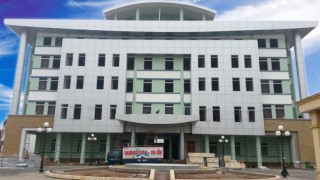What Is Fiscal Policy & How Does It Affect the Economy?
- Danh mục: Forex Trading
Typically, fiscal policy comes into play during a recession or a period of inflation, where conditions are escalating quickly enough to warrant government intervention. In fact, governments often prefer monetary policy for stabilising the economy. However, in some circumstances, monetary policy has its limitations. In serious recessions, a combination of the two policies may be needed. Interest rates set by an independent Central Bank help to take the political calculations out of demand management. In theory, a Central Bank would ignore political considerations and target low inflation.
- Monetary policy and fiscal policy refer to the two most widely recognized tools used to influence a nation’s economic activity.
- In order to reduce such a lag and to minimize the legislative and executive red-taps, it is important to keep a shelf of public works in readiness.
- If the government lowers taxes, for example, it can lead to an increase in consumer spending (consumption) and business investment.
- When the private sector is overly optimistic and spends too much, too fast on consumption and new investment projects, the government can spend less and/or tax more in order to decrease aggregate demand.
The idea of what makes good fiscal policy has changed over the past century. Before 1930, the prevailing view was that the economy should operate without much government influence. After the stock market crash and the start of the Great Depression, that view changed. The advantages of fiscal policy proactively preventing economic collapse began to look better than nonintervention. In this situation, taxes have to be raised, and the government has to reduce its spending.
It is evident through changes in government spending and tax collection. In the wake of the pandemic, the economy demonstrated improvement in many areas, such as job growth, and worry in others, such as a growing budget deficit and record-breaking inflation rates. The Federal Reserve (the Fed) has several tools to increase and decrease interest rates or https://1investing.in/ the dollar value. Most common are raising or lowering the “interest on reserve balances” (IORB) and “overnight reverse repurchase agreements” (ON RRP). These two tools are used at the same time to influence the federal funds rate. Each type of fiscal policy is used during different phases of the economic cycle to stop or slow recessions and booms.
On Aug. 27, 2020, the Federal Reserve announced that it will no longer raise interest rates due to unemployment falling below a certain level if inflation remains low. It also changed its inflation target to an average, meaning that it will allow inflation to rise somewhat above its 2% target to make up for periods when it was below 2%. The creation of additional income through compensatory fiscal measures is not easily possible in underdeveloped countries as in advanced economies.
Fiscal Policy
When there is a global struggle to experience economic growth, then the tools that are in the toolbox of the central bank may not be useful. Even when there is the choice to lower interest rates during a worldwide recession, there are fewer export opportunities available because no one is spending as much money. Before any choices are made, there must be an evaluation of global health to insure the intended results are achievable. This kind of policy is set when the government is spending more than the taxes collected. It is usually used during recessions when there are high levels of unemployment and the majority of the businesses are not doing to increase the level of economic activity in a nation.
The sale of property rights provides a similar source of revenue, such as selling licences to broadcasters and to mobile phone companies for the right to use the public ‘airwaves’. Discretionary policy refers to policies which are decided, and implemented, by one-off policy changes. At Finance Strategists, we partner with financial experts to ensure the accuracy of our financial content. Crafting effective policies requires sound economic judgment, foresight, and a commitment to long-term stability and welfare. Fiscal decisions, while economically sound, might not always be politically popular.
The British government relied on the classical theory of economy, hoping that the economy would return to its normal state of equilibrium after the depression on its own. He argued that once an economy has reached that downturn level, a rise in fear and gloom from businesses will cause an extended period of depressed economy and unemployment. Combining these two policies proves effective in controlling an economy and achieving economic goals. The main goals of the fiscal and monetary policies are to achieve and maintain full employment, get economic growth at a steady and rising growth rate, and stabilize wages and prices. The U.S. economy tends to spend more time expanding than contracting. This means the government uses contractionary fiscal policies more than it does expansionary fiscal policies.
To cool down an overheating economy, taxes may be raised and spending decreased. Contractionary fiscal policy is the opposite of expansionary policy. Unlike the expansionary policy, which is set during recessions when the economy is slow and lagging, a contractionary fiscal policy is designated to slow down the economic activity. Reducing economic activity reduces demand for goods and services hence reducing inflation. While monetary policy relies on open market operations, reserve requirements, and/or the discount rate, fiscal policy involves the use of government spending and/or changes in government tax policies.
The purpose of fiscal policy is to implement artificial measures to prevent an economic collapse and to promote healthy and steady economic growth. In this reading, we have sought to explain the practices of both monetary and fiscal policy. When economic activity slows or deteriorates, the government may try to improve it by reducing taxes or increasing its spending on various government programs. High inflation and the risk of widespread defaults when debt bubbles burst can badly damage the economy. This risk, in turn, leads governments (or their central banks) to reverse course and attempt to contract the economy. Keynes believed that governments could stabilize the business cycle and regulate economic output by adjusting spending and tax policies to make up for the shortfalls of the private sector.
What is the purpose of Fiscal Policy?
The government will change the taxation rates from time to time to mitigate inflation. Businesses thrive more when the taxes have been lowered, and a huge money supply is available. Fiscal policy, on the other hand, helps increase gross domestic product (GDP) through expansionary tools. This occurs because demand for goods and services increases, which leads to a rise in prices and output. While the overall goal of monetary and fiscal policy is generally the same—to influence the economy—there are inherent differences between the two. Roosevelt’s plans implemented expansionary fiscal policies by spending to build roads, bridges, and dams.
Great! The Financial Professional Will Get Back To You Soon.
Targeted approaches allow for efficient resource allocation, maximizing impact. Fiscal policy’s adaptability addresses emerging challenges effectively. As a result, the challenge lies in anticipating future scenarios and crafting policy that remains relevant when its effects finally ripple through the economy.
These changes can create more jobs, greater consumer security, and other large-scale effects that boost the economy in the long run. President George W. Bush enacted the Economic Growth and Tax Relief Reconciliation Act of 2001 and the Jobs and Growth Tax Relief Act of 2003. The intent behind these two laws was to cut taxes to stimulate economic growth. However, the tax cuts truly only benefited the top one-fifth of households and created mediocre growth at best. The government has two tools it uses when implementing fiscal policy. The first tool is collecting taxes on business and personal income, capital gains, property, and sales.
That means items become more expensive because the currency has less overall value to it. Fiscal policies generally take the form of funding from the government to accomplish policy objectives. The Federal Reserve kept interest rates at 0% until March 2022; it then decided to pivot and begin combatting inflation by raising the rate. This is the interval between the time when need of an action is recognized and the time when the action is actually taken. Even when the need of action has been recognized, the sanction from legislature and executive must take some time and that may involve about 1 to 15 months of time. The sale of state-owned assets, such as public utilities like gas, water, and electricity, has in the past provided ‘windfall’ revenue to the UK government.
In this case, interest rates are lowered, reserve limits loosened, and bonds are purchased in exchange for newly created money. If these traditional measures fall short, central banks can undertake unconventional monetary policies such as quantitative easing (QE). The ultimate objective of the fiscal is to use government spending and taxation to influence and maintain a stable economy.[2] Policymakers use monetary policy and fiscal policy as their main tools.
The impact of the monetary policy tools that are used by the central banks of a country have a nationwide impact. Even one choice can be enough to create a ripple effective that can create adverse results just as easily as it can offer benefits. Because it is a macroeconomy decision, there is no way to disadvantages of fiscal policy alter the impact on local segments of the economy which may not need any stimulus. Some regions might even need more help than what is currently offered by the choices made. That means you cannot use monetary policy as a way to solve specific problems or boost industry segments or economic regions.
As personal wages shrink during a recession, taxes collected through this system help cushion losses in consumers’ purchasing power, keeping more spending money in the hands of consumers. In a nutshell, Keynes believed that the government’s budget should be in deficit when the economy is slowing and in surplus when economic growth is booming (usually accompanied by inflation). The real business cycle argues that macroeconomic fluctuations are due to changes in technological progress and supply-side shocks. Therefore, using demand-side policy to influence economic growth fails to address the issue and just makes the situation worse.
The most recent projections from the OMB estimate that high primary deficits will persist until the end of FY 2014. By 2016, outlays net of interest payments are estimated to fall to about 19.8 percent of GDP, which is still 1.4 percentage points higher than the average from 2004 to 2008. An even greater incentive is the fact that over half of the debt is held by foreign and international investors.

























